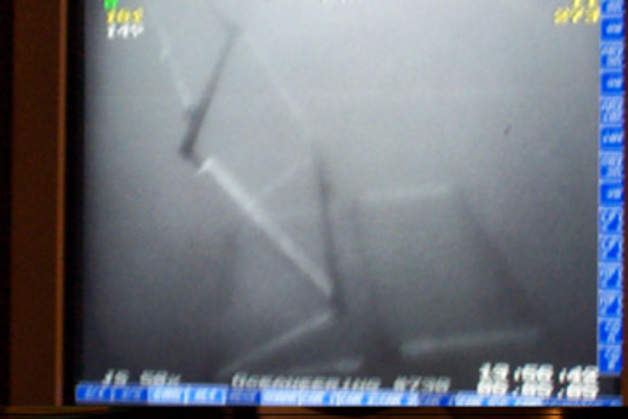Alba Field
RetroSled™ system used to replace failing cathodic protection on a pipeline in Equatorial Guinea

RetroSled™ anode system used to replace failing cathodic protection on a pipeline in EG
In 2006, Deepwater Corrosion Services, Inc. conducted a pipeline anode retrofit of an offshore process pipeline in Equatorial Guinea. The pipeline, located in water depths of 200 ft., had low cathodic protection potentials, prompting Deepwater's cathodic protection design team to select the larger, expanding version of the RetroSled™ system in order to re-polarize the pipeline quickly. The retrofit cathodic protection (CP) system consisted of:
4 Expanding RetroSleds™
8 RetroClamps™


Installed by ROV
After the equipment was shipped to the shore base, it was loaded onboard a dynamic positioning (DP1) vessel equipped with an ROV. The retrofit system included four ExpandaSleds™ (expanding RetroSleds™), complete with two RetroClamps™ each, to be installed without the assistance of divers. Prior to deployment, the RetroClamps™ and tie-back cables were secured to the ExpandaSled™ frames using cable ties. Meanwhile, lifting slings and tag lines are attached to the collapsed sled. During deployment, the sleds, in folded configuration, were lifted safely off deck and lowered to the awaiting ROV for final positioning on the sea floor. Sleds were placed parallel, approximately 15 ft. off the pipeline.
The ROV then carried the RetroClamps™ across the sea floor, laying them next to the pipeline and breaking cable ties along the way. Afterward, the ROV transferred the winch line from the ExpandaSled’s lifting eyes to a nylon rope on the expanding eyes. The DP1 vessel then maneuvered approximately 30 meters in expansion direction, while slowly coming up on the winch until half of the sled was extended. The operator repeated this maneuver for the other side of the sled. After the sled was opened, the RetroClamps™ were secured onto desired pipeline locations by tightening the T-handle contact bolt until secure. The photos show the manipulator arm putting the RetroClamps™ into place. A CP probe was present to verify connection.





